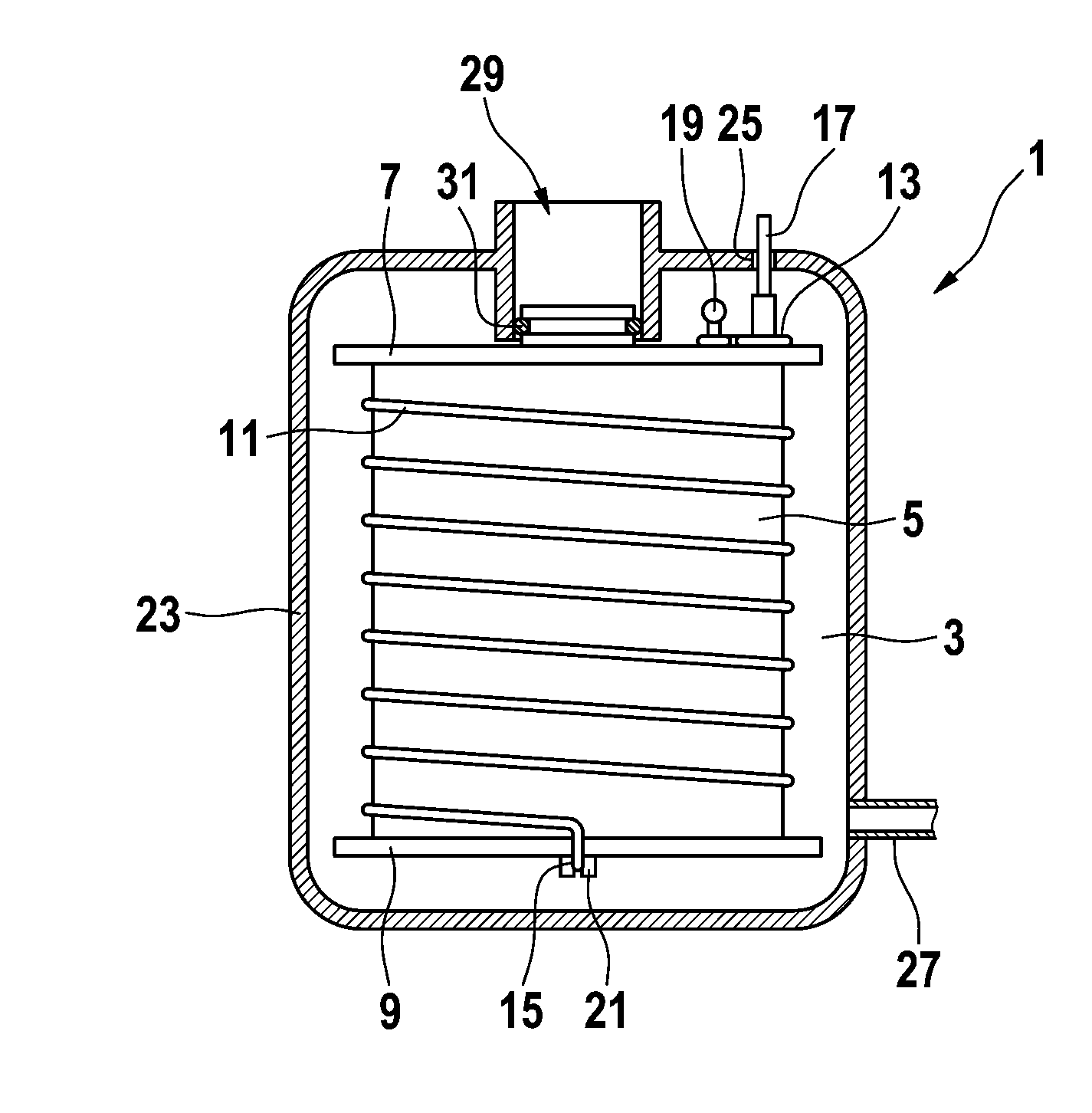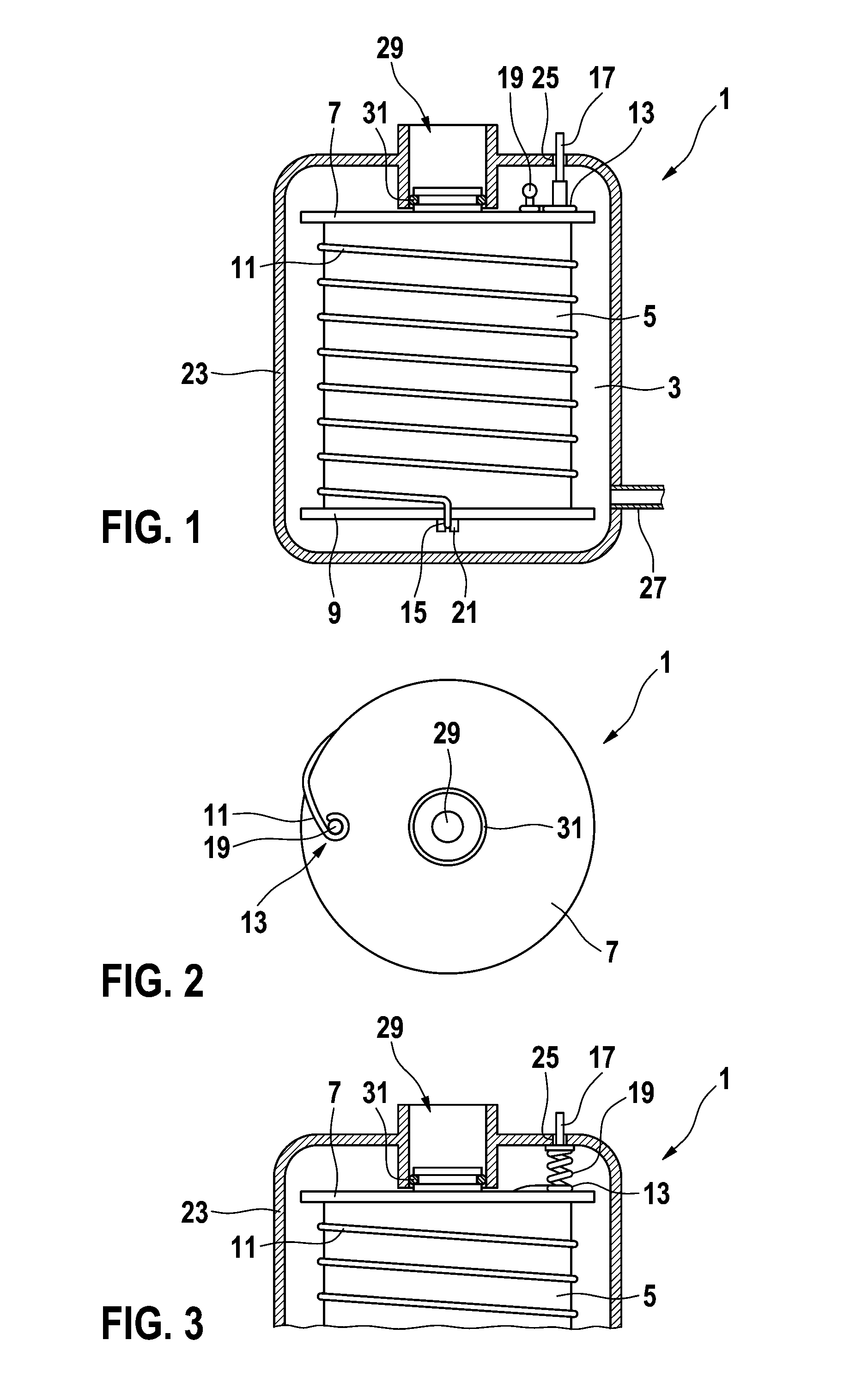Grounding of a filter by means of an electrically conductive conductor trace on the filter element
a technology of conductor trace and filter element, which is applied in the direction of filtration separation, machine/engine, separation process, etc., to achieve the effect of cost-effective production and universal applicability of the filter
- Summary
- Abstract
- Description
- Claims
- Application Information
AI Technical Summary
Benefits of technology
Problems solved by technology
Method used
Image
Examples
Embodiment Construction
[0031]All figures are only schematic depictions of inventive devices or of the constituent parts thereof in accordance with exemplary embodiments of the invention. Particularly spacing distances and size relations are not reflected true to scale in the figures. Corresponding elements are provided with the same reference numerals in the different drawings.
[0032]In FIG. 1, a cross section of a filter 1, in particular of a fuel filter is depicted. The filter comprises a filter element 5 which is designed to clean a liquid 3 of undesired particles. The filter element 5 can, for example, be folded filter paper, if applicable with an inner support structure. The filter element 5 is disposed between a first end cap 7 and a second end cap 9. The end caps 7, 9 impermeably close off the filter element 5 with respect to the liquid 3 in the intermediate space between a housing 23 and the filter element 5. In so doing, the liquid 3 must pass through the filter element 5 before entering into a ca...
PUM
| Property | Measurement | Unit |
|---|---|---|
| electrical conductivity | aaaaa | aaaaa |
| electric charge | aaaaa | aaaaa |
| electrically conductive | aaaaa | aaaaa |
Abstract
Description
Claims
Application Information
 Login to View More
Login to View More - R&D
- Intellectual Property
- Life Sciences
- Materials
- Tech Scout
- Unparalleled Data Quality
- Higher Quality Content
- 60% Fewer Hallucinations
Browse by: Latest US Patents, China's latest patents, Technical Efficacy Thesaurus, Application Domain, Technology Topic, Popular Technical Reports.
© 2025 PatSnap. All rights reserved.Legal|Privacy policy|Modern Slavery Act Transparency Statement|Sitemap|About US| Contact US: help@patsnap.com


